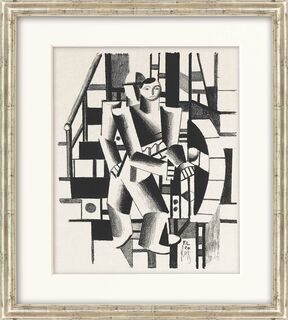Fernand Léger
1881-1955
Fernand Léger is one of the best-known artists of the French avant-garde. After impressionistic beginnings, he moved on to geometric abstractions of cubes, cylinders, and spheres under the influence of Paul Cézanne and the cubism of Pablo Picasso and Georges Braque. The trained architect was fascinated by the technical changes of that time. Thus, after his service in the First World War, his imagery included cogwheels, crankshafts, and screws - the world of machines became the focus of his work.
In 1920, Léger met the French architect Le Corbusier and connected with the artist group "De Stijl", which included Piet Mondrian. From the 1930s onwards, his painting style became more naturalistic again, and echoes of Surrealism began to appear. Later, the depiction of the human being became increasingly important. The artist wanted to capture his environment anew through colour and form and created massive, abstracted human figures in his unmistakable style, the appearance of which the weekly german newspaper DIE ZEIT once provocatively compared to that of Playmobil men.
Between 1940 and 1945, he lived in the USA, where he held a professorship at Yale University, but returned to France after the end of the Second World War.
Léger also created numerous murals, including one for the Great Hall of the UN building in New York. His works are in such renowned museums as the Metropolitan Museum of Art in New York and the Centre Pompidou in Paris.

